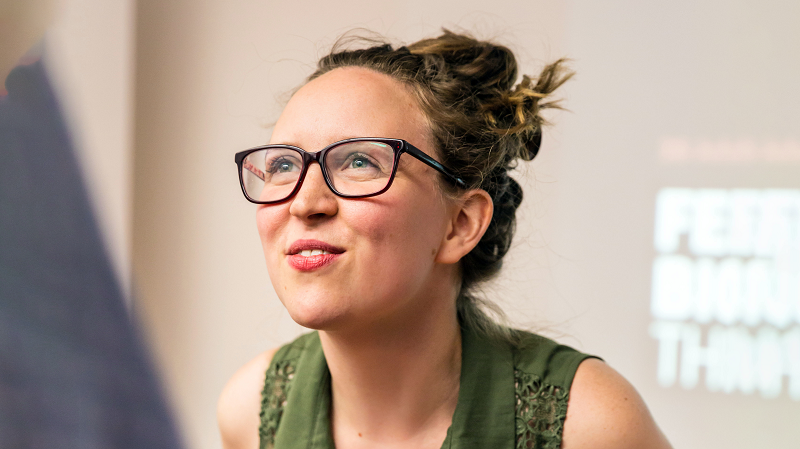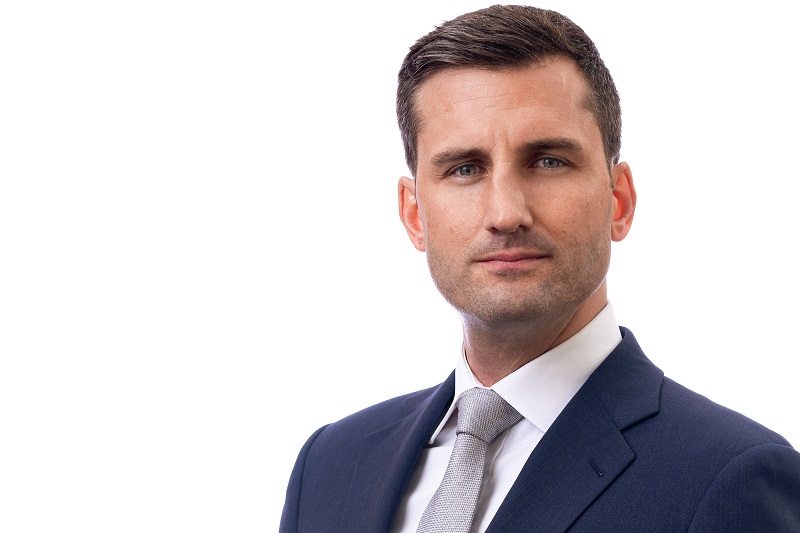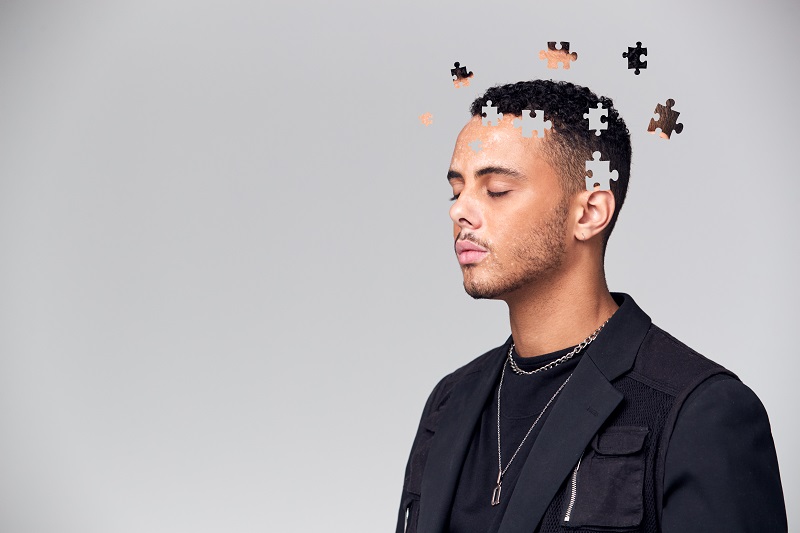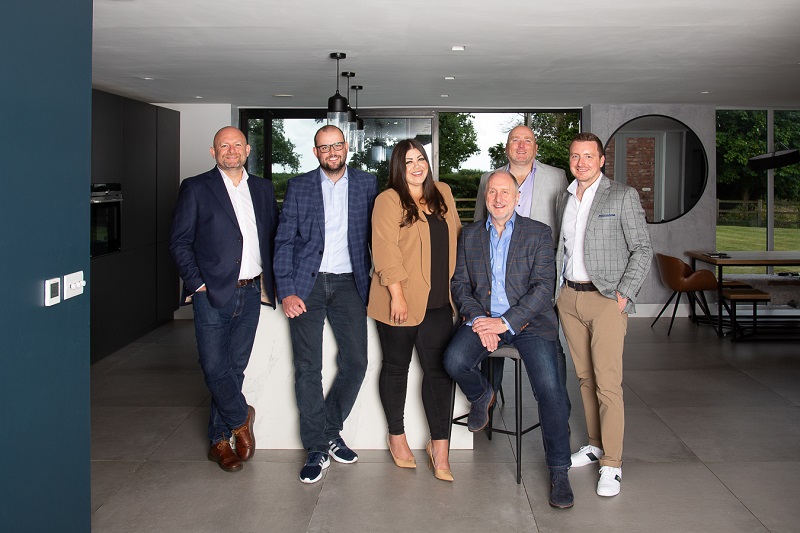Hanna McClosky is the Founder and CEO of Fearless Futures, a consultancy that helps leaders design equitable systems. She discusses challenging inequalities and the importance of data to DEI.
What inspired you to set up Fearless Futures?
While working in investment banking, I got involved in diversity and inclusion efforts. I was very active to start with but saw nothing change; it was like Groundhog Day. I engaged with the writing of Bell Hooks and other Black feminists and scholars, and I remember thinking, if my mother, who is an Arab Muslim, worked at this bank, where would she fit in?
I had this deep belief and determination that there must be some other way to communicate these profound ways of analysing and seeing the world I was reading about. Ways that will make people more likely to disrupt the inequity they see around them.
How did you start?
I read a lot about how children and adults learn and this need for people to participate in designing their learning, not just be receivers.
I drew heavily from Bell Hooks’s notion that learning is risky and that you may need to let go of an idea you’ve had for a long time -and I leaned into her principal and pedagogy. I effectively began to practice the facilitation approach we now use with young people in schools, alongside parallel tracking and building this work with adults, specifically with senior leaders in organisations. The focus was to allow them to have the most transformative learning experiences.
Eight years later, we are still refining our pedagogy, experimenting with new approaches in the classroom, whether virtual or in person, with what it takes to build new thinking mechanisms about how the world has been set up around us. And we’re very committed to having robust analysis.
Could you tell us about your Designing for Inclusion and Building Inclusive Cultures programmes and what people can expect to learn from them?
Design for Inclusion is for leaders and DEI practitioners. It starts with robust analysis; then, we walk them through nine systems of oppression: colonialism, disablism, classism, antisemitism, Islamophobia, racism, sexism, heterosexism and cissexism. We look at them historically and in the present. Oppression mutates and transforms over time, but there are consistent threads between these different systems of oppression.
We give people a technical framework for understanding the roots of these systems, the structures – institutions, policies, laws, and so on – and how they transform into negative outcomes. Next, we introduce intersectionality and show them how the systems don’t just operate in isolation. Then we move into the action phase of how they intervene in their company’s larger ecosystems to optimise equity.
There are two more parts. One involves practising all the different tools that we’ve given them. And the other is about how they can redesign policies, processes and practices and think about what accountability looks like.
Building Inclusive Cultures is very similar, but it doesn’t include the focus on policy and process redesign. It consists of systems analysis, intersectionality and equity. But it remains much more their relationship with being a team manager than the wider levers leaders can pull.
You’ve said you’re not afraid to speak truth to power; what do you mean by that?
Speaking truth to power means being deeply grounded in your principles, digging into your courage because power can be frightening and wielded in many ways that aren’t always advantageous or friendly, in the context of actively wanting to challenge oppression and build equity.
So, precision for us is important. When we talk about truth, we mean being extremely precise about what is happening when it’s happening. And be prepared that not everyone is going to want to hear it. Not everyone wants to let go of those old beliefs.
The truth is about being precise about how oppression operates, its mechanics, what it seeks to do and how it shows up. It is also about being principled in the face of institutions or organisations or individuals who are resolute in their opposition to power. In learning environments, that can be very challenging.
Do you think there is more acceptance that things need to change?
Some people don’t want those bad things to happen but don’t want to make any connections between themselves as participants in these wider systems that lead to these bad things happening. Others want something to change but resist it because they’re deeply committed ideologically to specific ideas involving certain groups of people.
Then you have people that surprise you, who are ready to take responsibility and learn. All movements for change start small and then grow. This is why we do what we do because it only takes a few people to galvanise and bring in other people.
How do you appeal to those people that are not interested?
It depends on the reason for their apathy. Some people may be quietly keen but not have the tools and robust analysis. Equally, organisations sometimes misdiagnose enthusiasm for knowing what to do. Once given the tools and frameworks to make a change, attitudes shift.
Also, it’s important to work closely with early adopters on culture change because you never know whether they will end up being slow burners and suddenly become real champions. They also might end up being the real resistant people, but we can’t know until we’ve engaged in that process.
After George Floyd’s death, many companies made promises. How much has changed in those two years?
Not a huge amount, which is devastating and probably expected. In the summer of 2020, I saw so many posts on LinkedIn from various organisations. People were panic-calling us. I had to tell them to take a chill pill because there’s a 400-year-plus issue, and they’d just joined the party. I’d say to them: “Calm down, and if in three weeks, when it’s out of the news, you still feel committed to taking action, why don’t we have a conversation then?”
But there’s not enough internal expertise to meet these large organisations’ challenges. It might be deliberate because more experienced professionals might ask for very big budgets or cause trouble.
What skills should in-house DEI professionals have?
DEI professionals need to be skilled at identifying the root causes of the negative outcomes of oppression they are witnessing and aiming to tackle each day. The reason for this is twofold: 1) solutions that target root causes may have higher chances of being impactful and will be more holistic, and 2) it will allow them to more clearly articulate the causes of the outcomes that are occurring and why they are doing what they are doing.
Secondly, DEI professionals need to have great stakeholder management skills because getting things done at scale is often challenging. This also looks like being able to powerfully communicate a vision of the kind of organisation they want to build with their colleagues.
Finally, they need to be adept at moving from strategy to execution. Often, DEI professionals don’t see issues as part of a system; they need to connect the dots by analysing the local and wider issues and know what “levers” need to be pulled.
You can’t just say, “I want to have more women in leadership”, and then only focus on mentoring. One single ‘initiative’ is unlikely to provide the solution to the outcome of systemic oppression, in this example, of sexism in the company. Several levers will need to be pulled, and having a sense of when to do what and the anticipated outcome will make the iteration that will likely be needed more impactful.
Have you seen any exciting new DEI concepts or ways of working that are really resonating with people organisations?
Intersectionality as a concept has gained a lot of attention over the last few years. But it exists as a buzzword, and people don’t necessarily have any deep sense of what that means or what they do with it. Of course, intersectionality is a straightforward concept, and we try and support them in thinking about how they will use it when it comes to data. What are they going to do with that data, for example? That’s probably the newest piece of interest to organisations, but they’re often not set up to gather data in that way.
Do you have any advice for organisations struggling to collect and interpret data?
First, think about why you are collecting this data. Also, you need a certain amount for it to be of sufficient and useful quality.
Some organisations might be fearful that no one will fill in the form. And the question is, why don’t employees want to fill out a form? Why are employees worried about disclosing their disability status? What signals exist within the organisation that means there could be retribution, or the loss of opportunity, for disclosing that sort of information? How are they communicating what they’re doing? What commitments have they made about what this data is going to do? What are the consequences of not doing XYZ?
When interpreting the data, if an organisation is struggling to collect it, that’s likely due to staff not feeling able to honestly share their experiences. They might worry about being identified or have concerns about the purpose of the data collection. Ultimately, data collection, in this case, might need to take a backseat to the work of actually building trust around your inclusion and equity intentions.
What do you say to people who feel marginalised by different ways of working and culture shifts?
For us, it would start by ensuring we had a shared understanding of oppression. And, therefore, what marginalisation actually is. We’ve got to make space for people having emotions and big feelings about change, and not everyone does very well with change. But I think it’s essential for an organisation to have a clear, shared understanding of these words and that marginalisation is not somebody not talking to you at a party. It’s about understanding history, about structures and forms.
Organisations get into tricky territory when they don’t have these robust definitions. They think that inclusion means everyone feels included in every single thing. But we know that energy and effort will go to addressing these historical injustices that lead to certain communities being excluded from opportunity, access, power, and leadership.
What’s next for Fearless Futures?
We have spent the last nine months developing what we think is an amazing and extremely robust interactive e-learning. It combines videos, multiple choice, drag and drops and matching activities based on real-world scenarios.
Ultimately, it is our way of scaling, our learning. If a 30,000-person organisation wanted to ensure everyone had the same language and tools, we’d be doing workshops until 2050 to get through to everyone. Then people would have left, and new people would never have given them that initial foundation we think is necessary.
The new e-learning is mobile-friendly, so if you happen to not work in an office job, you can still access it, and that was really important for us because we felt really strongly that everyone has a right to this education. It shouldn’t just be for execs.
*The new e-learning will be completed this autumn.









